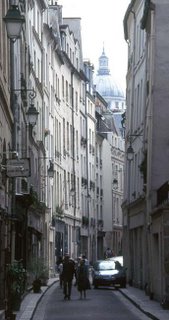 When the Romans inhabited Paris around the 3rd century, they located their settlement on the left bank of the Seine, directly across from the islands, on the rise we know today as the Montagne Sainte Geneviève. Here were the Roman forum, baths, and theater and amphitheater, as well as the characteristic Roman grid-patterned streets and an aqueduct. Some vestiges of the Roman town are visible today: the baths on the site of the Hôtel et Musée de Cluny and the Arènes de Lutèce on the rue Monge are two of the more prominent.
When the Romans inhabited Paris around the 3rd century, they located their settlement on the left bank of the Seine, directly across from the islands, on the rise we know today as the Montagne Sainte Geneviève. Here were the Roman forum, baths, and theater and amphitheater, as well as the characteristic Roman grid-patterned streets and an aqueduct. Some vestiges of the Roman town are visible today: the baths on the site of the Hôtel et Musée de Cluny and the Arènes de Lutèce on the rue Monge are two of the more prominent.About a thousand years later, in 1215, Pope Innocent III authorized the foundation France’s first university in this part of the city. Since then, the Latin Quarter (so named because Latin was the language of education until the 18th century) and the Sorbonne have constituted the primary center of learning in Paris.
 Le Quartier Latin and beyond. The Place St. Michel is in the center-right of the photo, on the left-hand side of the arched bridge.
Le Quartier Latin and beyond. The Place St. Michel is in the center-right of the photo, on the left-hand side of the arched bridge.Start your tour in the Place St. Michel (métro: St. Michel) directly across from the Ile de la Cité. The bustling square is full of tourists and the cafés that cater to them, but it is also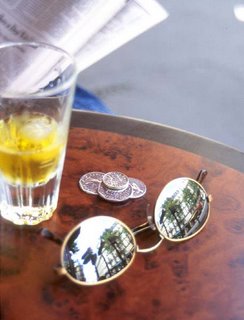 flanked by new and used book stores that recall the quarter’s relationship with the Sorbonne. Here is where, in May 1968, protesting students clashed with police over university policies and general discontent with the French government, setting off a series of marches and strikes throughout the city and the nation. Completed around 1860, Gabriel Davioud’s fountain with a sculpture of Saint Michael slaying the dragon was commissioned by Baron Haussmann to mitigate the impact of a large bare wall facing the Place.
flanked by new and used book stores that recall the quarter’s relationship with the Sorbonne. Here is where, in May 1968, protesting students clashed with police over university policies and general discontent with the French government, setting off a series of marches and strikes throughout the city and the nation. Completed around 1860, Gabriel Davioud’s fountain with a sculpture of Saint Michael slaying the dragon was commissioned by Baron Haussmann to mitigate the impact of a large bare wall facing the Place.
Walk south (away from the river) up the Boulevard St. Michel. As you cross the Boulevard St. Germain (a major traffic thoroughfare from west to east) you will see on the southeast corner an exposed archeological dig behind large iron fences. These are the excavated ruins of the Roman baths originally built on the site at the beginning of the 3rd century. Less than a hundred years later, the baths were destroyed in a barbarian attack on the city. Much later, in the 14th century, the site was purchased by Abbot Pierre de Châlus of Cluny-en-Bourgogne. There he built an abbey to house monks from Burgundy who traveled to Paris and the new university. In the 19th century, the building was converted to a museum and today houses a collection of medieval art and artifacts. Visitors can also tour the excavated Roman baths.
From the Cluny museum’s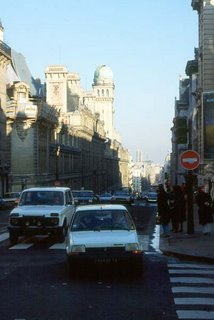 entrance just off the rue des Ecoles, walk south along the narrow rue Victor Cousin. The buildings of the Sorbonne rise up on the left-hand side. About halfway to the rue Soufflot you will pass, on the left, the Eglise de la Sorbonne, a 17th century church that is sometimes open to the public for specific exhibitions.
entrance just off the rue des Ecoles, walk south along the narrow rue Victor Cousin. The buildings of the Sorbonne rise up on the left-hand side. About halfway to the rue Soufflot you will pass, on the left, the Eglise de la Sorbonne, a 17th century church that is sometimes open to the public for specific exhibitions.
Continue along the rue Victor Cousin to its intersection with the much broader rue Soufflot. To the right (west) you can see the Luxembourg Gardens. To the left, the temple portico and soaring dome of the Panthéon dominate your view. Walk up the rue Soufflot (named after the building’s architect) to the Panthéon.
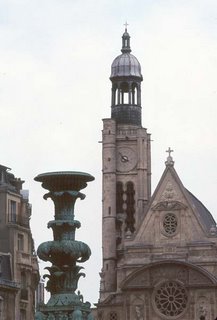 Behind the Panthéon, on the Place Sainte Genviève, is the church of St. Etienne du Mont (right). The current building was consecrated in the early 17th century. It replaced an earlier church which was part of the Ste. Genviève abbey complex on the site. The church is a mix of gothic and renaissance styles and, in addition to standing as a shrine to Saint Genviève, contains the remains of the French writers Racine and Pascal.
Behind the Panthéon, on the Place Sainte Genviève, is the church of St. Etienne du Mont (right). The current building was consecrated in the early 17th century. It replaced an earlier church which was part of the Ste. Genviève abbey complex on the site. The church is a mix of gothic and renaissance styles and, in addition to standing as a shrine to Saint Genviève, contains the remains of the French writers Racine and Pascal.
The Latin Quarter is the historic intellectual center of Paris. From here, the City of Light radiates in all directions.
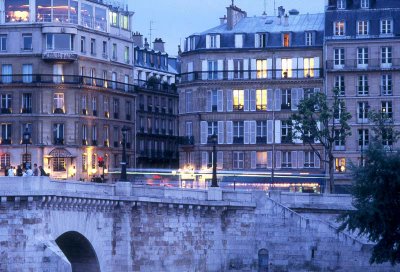 The famouns Tour d'Argent restaurant overlooks the Seine River and the cathedral of Notre Dame from the Latin Quarter.
The famouns Tour d'Argent restaurant overlooks the Seine River and the cathedral of Notre Dame from the Latin Quarter.
 flanked by new and used book stores that recall the quarter’s relationship with the Sorbonne. Here is where, in May 1968, protesting students clashed with police over university policies and general discontent with the French government, setting off a series of marches and strikes throughout the city and the nation. Completed around 1860, Gabriel Davioud’s fountain with a sculpture of Saint Michael slaying the dragon was commissioned by Baron Haussmann to mitigate the impact of a large bare wall facing the Place.
flanked by new and used book stores that recall the quarter’s relationship with the Sorbonne. Here is where, in May 1968, protesting students clashed with police over university policies and general discontent with the French government, setting off a series of marches and strikes throughout the city and the nation. Completed around 1860, Gabriel Davioud’s fountain with a sculpture of Saint Michael slaying the dragon was commissioned by Baron Haussmann to mitigate the impact of a large bare wall facing the Place.Walk south (away from the river) up the Boulevard St. Michel. As you cross the Boulevard St. Germain (a major traffic thoroughfare from west to east) you will see on the southeast corner an exposed archeological dig behind large iron fences. These are the excavated ruins of the Roman baths originally built on the site at the beginning of the 3rd century. Less than a hundred years later, the baths were destroyed in a barbarian attack on the city. Much later, in the 14th century, the site was purchased by Abbot Pierre de Châlus of Cluny-en-Bourgogne. There he built an abbey to house monks from Burgundy who traveled to Paris and the new university. In the 19th century, the building was converted to a museum and today houses a collection of medieval art and artifacts. Visitors can also tour the excavated Roman baths.
From the Cluny museum’s
 entrance just off the rue des Ecoles, walk south along the narrow rue Victor Cousin. The buildings of the Sorbonne rise up on the left-hand side. About halfway to the rue Soufflot you will pass, on the left, the Eglise de la Sorbonne, a 17th century church that is sometimes open to the public for specific exhibitions.
entrance just off the rue des Ecoles, walk south along the narrow rue Victor Cousin. The buildings of the Sorbonne rise up on the left-hand side. About halfway to the rue Soufflot you will pass, on the left, the Eglise de la Sorbonne, a 17th century church that is sometimes open to the public for specific exhibitions.Continue along the rue Victor Cousin to its intersection with the much broader rue Soufflot. To the right (west) you can see the Luxembourg Gardens. To the left, the temple portico and soaring dome of the Panthéon dominate your view. Walk up the rue Soufflot (named after the building’s architect) to the Panthéon.
The building was commissioned by Louis XV in 1744 to honor Sainte Genviève, the result of a vow he made while suffering a life-threatening illness. Louis XV survived, but the monarchy didn’t. The church’s construction spanned the downfall of the monarchy and the turmoil of the French Revolution. Completed about 1790, the huge church was quickly secularized and designated to serve as the final resting place for the great heroes of the Revolution. Since then, the Panthéon has received the remains of a great number of honored French politicians, military leaders, scholars and writers, including Voltaire, Jean Moulin, Jean-Jaques Rousseau, and Victor Hugo.
 Behind the Panthéon, on the Place Sainte Genviève, is the church of St. Etienne du Mont (right). The current building was consecrated in the early 17th century. It replaced an earlier church which was part of the Ste. Genviève abbey complex on the site. The church is a mix of gothic and renaissance styles and, in addition to standing as a shrine to Saint Genviève, contains the remains of the French writers Racine and Pascal.
Behind the Panthéon, on the Place Sainte Genviève, is the church of St. Etienne du Mont (right). The current building was consecrated in the early 17th century. It replaced an earlier church which was part of the Ste. Genviève abbey complex on the site. The church is a mix of gothic and renaissance styles and, in addition to standing as a shrine to Saint Genviève, contains the remains of the French writers Racine and Pascal.Stand in the Place Ste. Genviève facing the church, then walk along the right-hand side of the church into the rue Clovis. Turn right and walk down the rue Descartes to the Place de la Contrescarpe. Here you are the top of the rue Mouffetard which descends the southern flank of the Montagne Ste. Genviève – you can really get a sense of the 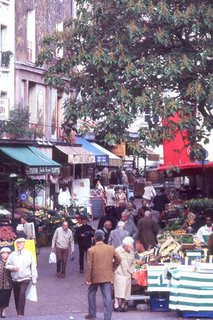 topography here. This is one of Paris’ many market streets and along it you will find butchers, cheese shops, bakeries, the shops of small grocers and wine merchants, along with restaurants and nightclubs.
topography here. This is one of Paris’ many market streets and along it you will find butchers, cheese shops, bakeries, the shops of small grocers and wine merchants, along with restaurants and nightclubs.
 topography here. This is one of Paris’ many market streets and along it you will find butchers, cheese shops, bakeries, the shops of small grocers and wine merchants, along with restaurants and nightclubs.
topography here. This is one of Paris’ many market streets and along it you will find butchers, cheese shops, bakeries, the shops of small grocers and wine merchants, along with restaurants and nightclubs.Continue on the tour from the Place de la Contrescarpe by walking down the rue Lacépède to the rue Monge. Cross the rue Monge and turn left. You should now be walking along the right-hand side of the rue Monge back toward the river. After crossing the small rue de Navarre, you will find, on your right, an entrance to the Arènes de Lutèce, the remains of the Roman amphitheater (there is also an entrance on the rue de Navarre itself). Now a park (and often a makeshift soccer field for neighborhood kids), the amphitheater’s foundation blocks, stage, and some seating rows are clearly visible. The ruins were rediscovered in the mid 19th century during the construction of the rue Monge and excavated to its current state in the early 1900’s.
Back on the rue Monge, continue toward the river. Turn right on the rue du Cardinal Lemoine and walk to the rue des Ecoles. On your right rises the Faculté des Sciences at Jussieu (seen with the Panthéon at left), a modern complex housing the schools of letters, humanities, life sciences, and health (part of which is also known as the University of Pierre and Marie Curie). Built in the 1960s, the lifted podiums and squared plan of the complex stand in stark contrast to the surrounding neighborhood. The buildings were closed down in 1998 to allow for a renovation that includes the removal of asbestos.
Turn back to the rue des Ecoles and continue to where it intersects the rue Monge. Turn right and walk to the intersection with the Blvd. St. Germain. You will be in the Place Maubert, essentially an intersection, but also the home of an outdoor market on Tuesday, Thursday and Friday mornings. The Place is also lined with many bistros for a drink or a quick lunch.
From here you can dive back into the heart of the Latin Quarter and explore the network of pedestrian streets lined with shops and eateries, primarily catering to tourists. You will find the Théatre de la Huchette, where Ionesco’s La Cantatrice Chauve has played to packed houses since 1955, and the Shakespeare and Company bookstore among the myriad souvenir shops, shellfish restaurants and kebab stands. Along the river you will find the typical stands of the bouquinistes, or booksellers, in the shadow of the Notre Dame cathedral selling used books, magazines, records, and photographs.
Or, you can head back to the Boulevard St. Michel and on to the Luxembourg Gardens for a leisurely (or not) stroll around the fountain and the grounds of the building that is now home to the French Senate.
Or still, you could head up the Boulevard St. Germain to St. Germain des Prés for coffee and heady conversation (your own) at the famous existentialists’ favorite cafés: Les Deux Magots and the Café de Flore.
The Latin Quarter is the historic intellectual center of Paris. From here, the City of Light radiates in all directions.
 The famouns Tour d'Argent restaurant overlooks the Seine River and the cathedral of Notre Dame from the Latin Quarter.
The famouns Tour d'Argent restaurant overlooks the Seine River and the cathedral of Notre Dame from the Latin Quarter.
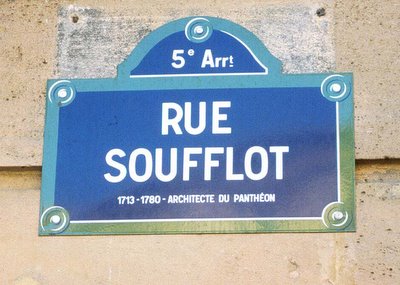
















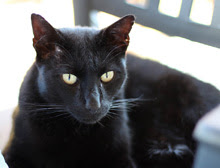


This is fantastic, Walt. So much history! Thanks. Any chance you might give an estimate of how long one of these tours might take, how much ground you're covering, and so on? For example, is this a half day walk, all day, a few hours? I know it depends a lot on where you stop and what you do, but... roughly? (Just in case I get to come to France one of these decades and want to try some of these walks.)
ReplyDeleteThanks,
Ginny
You can probably do each of the tours in a half day if you rush, but it certainly depends on how many wine stops you make (not to mention eating, side trips, shopping, eating, museums, etc., oh did I mention eating?). Ken and I started the Latin Quarter tour in 1989; we're still working on it!
ReplyDeleteHope you make it over before this decade is out!